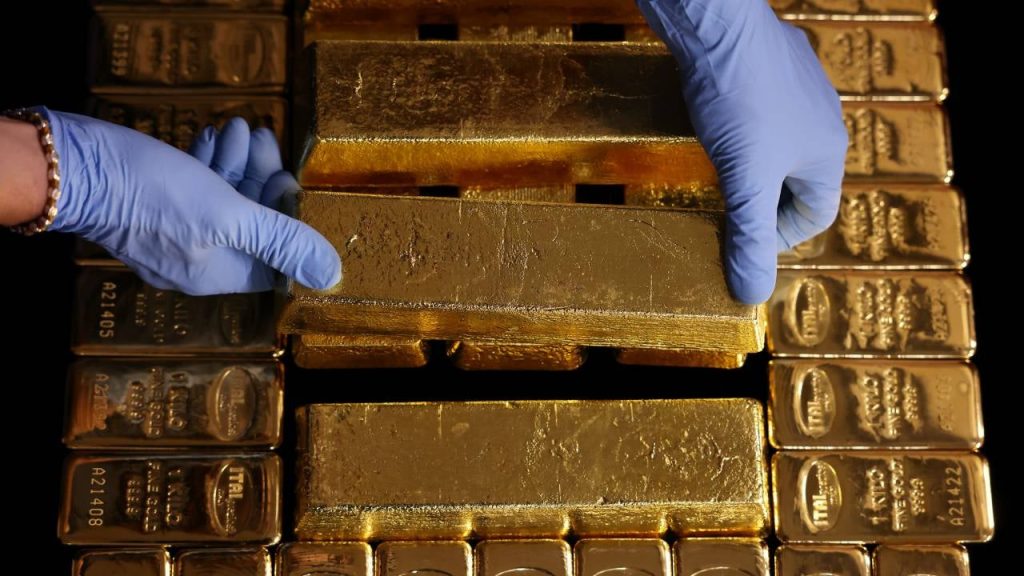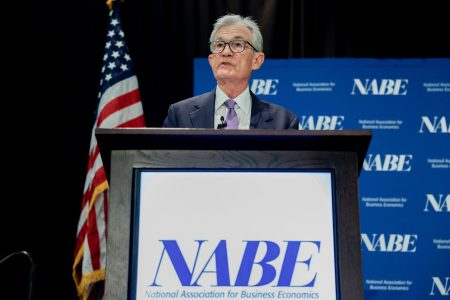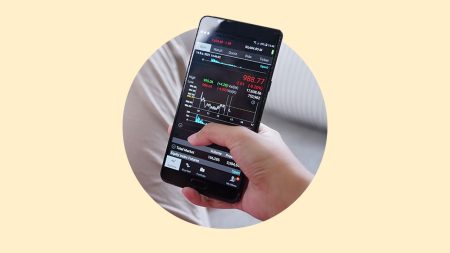Gold seems to be hitting new all-time highs month after month. The yellow metal soared through $3,600 an ounce in early September, and judging by the commodity’s price chart, the sky’s the limit.
One major investment bank came out recently with its gold price prediction. Spoiler alert: Gold could continue to skyrocket as the economic conditions align to keep gold running to ever-higher all-time highs.
Here’s the gold price forecast in the year ahead and what’s driving gold’s rapid appreciation.
Gold keeps setting new all-time highs: How high can gold rise?
Gold has been on a ferocious run since the start of 2024, climbing from $2,064 per ounce to more than $3,600 currently — a gain of about 76 percent. In 2025 alone, it’s risen from $2,629, scoring a gain of about 38 percent in the space of two-thirds of the year. It’s a huge breakout from gold’s price history in the decade following the great financial crisis. But could it run even higher?
Analysts at investment bank Goldman Sachs say it could. If the right conditions fall into place, gold could run up to nearly $5,000 in 2026. But they have more likely scenarios that see gold rising to $4,000 by mid-2026 or even $4,500. That’s a gain of 10-24 percent above recent prices.
The analysts’ note, titled “Diversify Into Commodities, Especially Gold,” calls the metal their “highest-conviction long recommendation in the commodities space.” The analysts say $4,000 is their baseline price target for midyear 2026, but that further upside is a real possibility.
“Should private investors diversify more heavily into gold, we see potential upside to gold prices to well above our $4,000 mid-2026 baseline,” says the report. It also added: “We estimate that if 1% of the privately owned US Treasury market were to flow into gold, the gold price would rise to nearly $5,000 an ounce, assuming everything else constant.”
That shift could occur as the U.S. dollar and American fiscal management are under threat, leading to a higher preference for a proven defensive store of value in gold.
“A scenario where Fed independence is damaged would likely lead to higher inflation, lower stock and long-dated bond prices, and an erosion of the dollar’s reserve-currency status,” said the report. “In contrast, gold is a store of value that doesn’t rely on institutional trust.”
Analysts at investment bank JPMorgan foresee a similar uptrend, with gold ending next year at $4,250. “We believe any potential weakening of the US Federal Reserve’s independence could have significant implications for long-term gold prices,” said their report.
Investors looking to invest in the trend have a variety of ways to invest in gold, but those looking to play its price appreciation may find the best gold ETFs a better option than buying gold bullion.
What are the key factors in gold’s rise?
Gold has been on a multi-year uptrend for a variety of reasons, many of which are interrelated. Here are some of the key factors influencing gold’s recent rise.
“The factors driving the price rise, such as Federal Reserve cuts, an increase in central bank purchases and geopolitical tensions, have increased the popularity of safer assets such as gold, which in effect has driven prices up,” says Rick Kanda, managing director at The Gold Bullion Company.
U.S. government debt
The U.S. government has been running significant annual budget deficits and rapidly increasing its total debt. With the recent passage of the One Big Beautiful Bill Act, prior tax cuts are locked in and new tax cuts that amount to $3.4 trillion in deficit have been passed. The anticipated rise in the nation’s debt — with little plan to rein it in — is leading investors to expect more inflation in the future and raising the interest rates that they demand on longer-term U.S. treasury bonds.
The expectation that the U.S. will continue to run significant deficits has led to a decline in the value of the U.S. dollar on foreign exchange markets. Investors may turn to a hard asset with a reputation as a store of value — such as gold — in order to mitigate the impact of a decline in the dollar.
“A weaker U.S. dollar lowers gold’s price for global buyers, increasing demand, while growing U.S. deficits and fiscal risks reduce confidence in the dollar, pushing investors toward gold as a safer store of value,” says Kanda.
Inflation expectations
Closely related to U.S. deficit spending are investors’ expectations for rising inflation, both in the near term and long term. In the near term, investors see inflation rising due to President Donald Trump’s tariffs, which raise the cost of imports and often the cost of domestic products, too. Anticipation that the Federal Reserve will lower short-term interest rates is also raising inflation expectations. Longer term, unsustainable U.S. government spending is leading to higher inflation worries.
Investors may turn to gold as a way to hold value against inflation, hedging the risk that inflation continues to rise in the short and long run due to a variety of factors.
Buying from central banks
The U.S. dollar is the most important reserve asset for the central banks of many nations, because it’s highly liquid, the U.S. pays its debts and the dollar tends to hold its value well. But central banks have been moving to buy more gold in recent years, for reasons such as rising inflation expectations and an unsustainable U.S. debt situation, as well as the increasing price of gold itself.
The gold buying spree is widespread, too. A June survey from the World Gold Council showed that 76 percent of the 73 central banks surveyed expect their gold reserves to be higher in five years. Meanwhile, about three-quarters of these banks expect their holds of dollars to be lower.
Potential loss of the Fed’s independence
A wild card that has emerged is the potential loss of the Federal Reserve’s independence, which could lead to U.S. interest-rate policy being set for the political benefit of those in power. The loss of the central bank’s independence could lead to higher inflation over time.
President Trump has been publicly attacking Fed Chair Jerome Powell for months, calling on him to resign. Now he’s taken to investigating Lisa Cook, a member of the Fed’s Board of Governors. In the fight between Trump and Powell, investors could come out big losers.
Rising bond yields
With inflation expectations rising, investors are raising the yields they need when purchasing a bond, lowering the bond’s price. Those who invest in U.S. Treasurys, such as the world’s central banks, may decide that they don’t want the risk of a declining bond price and shift some holdings to gold to de-risk their portfolio. Again, this risk is tied to debt unsustainability.
Overall economic uncertainty
Gold has a long track record as a “turn to” asset in times of economic uncertainty and turmoil, so just the expectation of uncertainty could have investors seeking out gold. Gold has a long track record as a defensive store of value, so investors see it as a safe haven when times get tough.
“Gold is a global safe-haven asset that helps protect portfolios against inflation, currency weakness, or geopolitical crises,” says Kanda. “It’s negatively correlated with stocks and the dollar, so if the dollar and stocks drop, gold isn’t affected, which makes it a key diversifier.”
Bottom line
While gold has certainly been on a strong run — one that may well continue — over time, stocks have delivered strong returns, with the S&P 500 index gaining about 10 percent per year on average. In fact, an investment in an S&P 500 index fund is what legendary investor Warren Buffett recommends as the best long-term investment for most individual investors.
Editorial Disclaimer: All investors are advised to conduct their own independent research into investment strategies before making an investment decision. In addition, investors are advised that past investment product performance is no guarantee of future price appreciation.
Why we ask for feedback
Your feedback helps us improve our content and services. It takes less than a minute to
complete.
Your responses are anonymous and will only be used for improving our website.
Help us improve our content
Read the full article here









